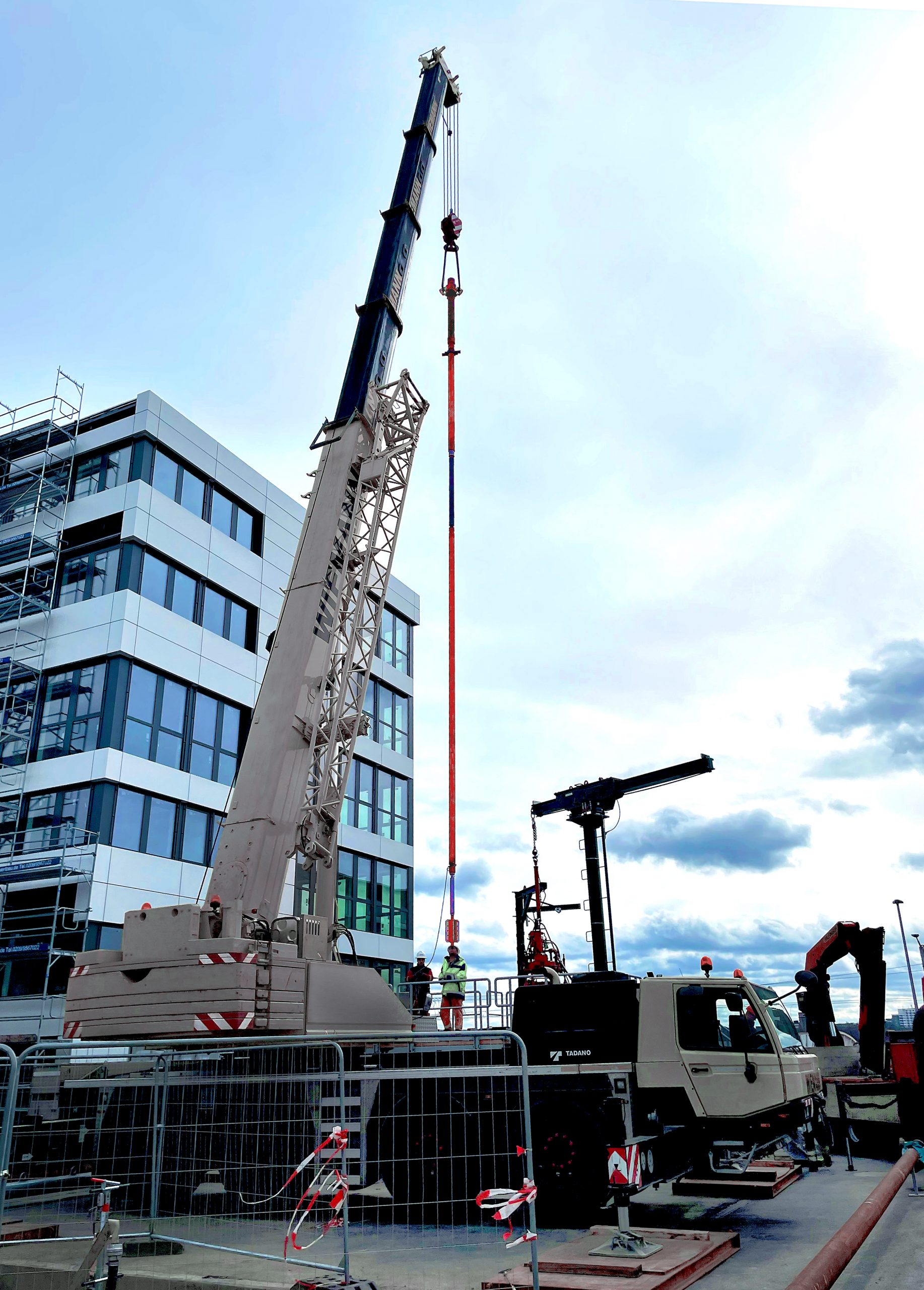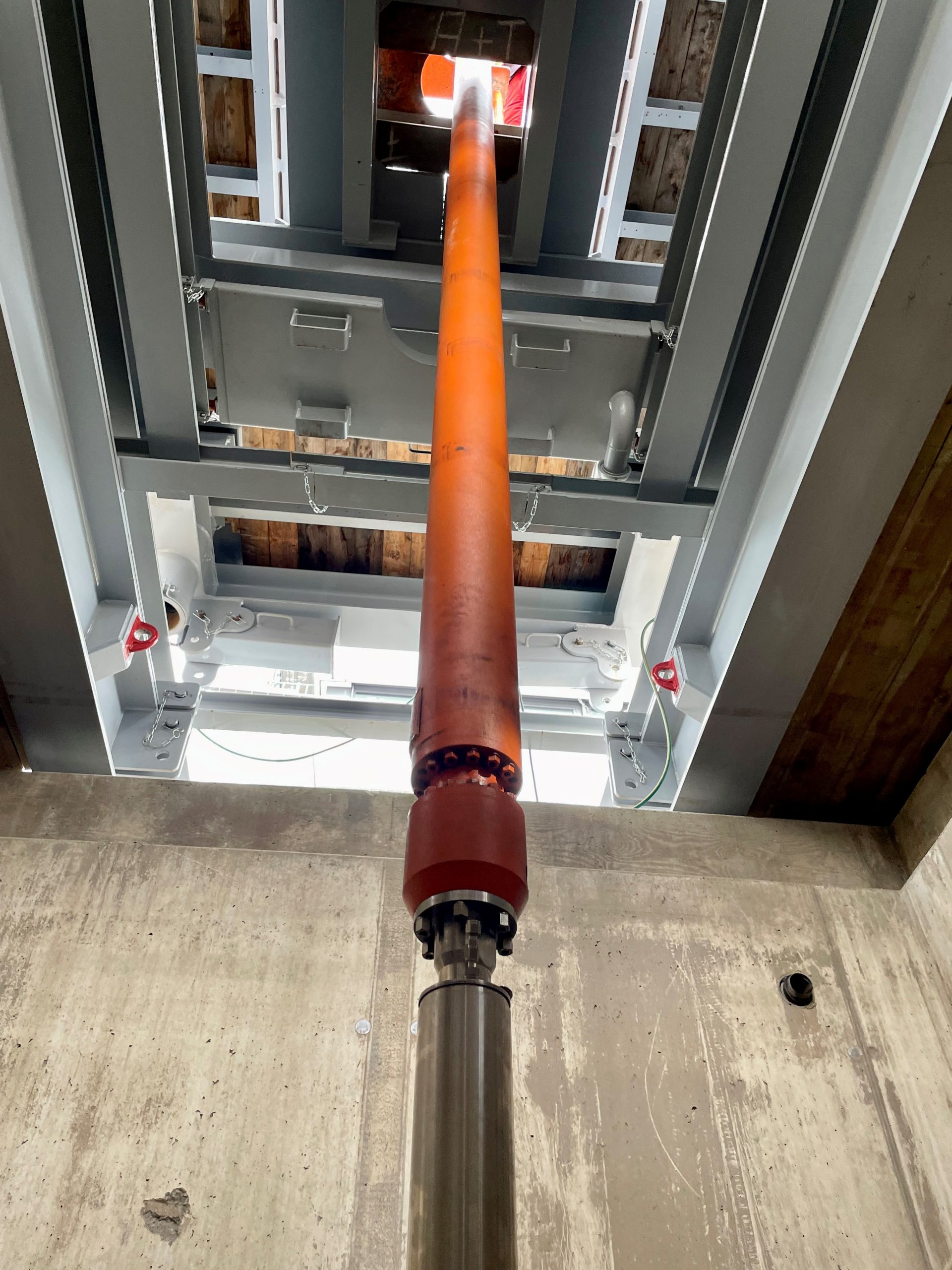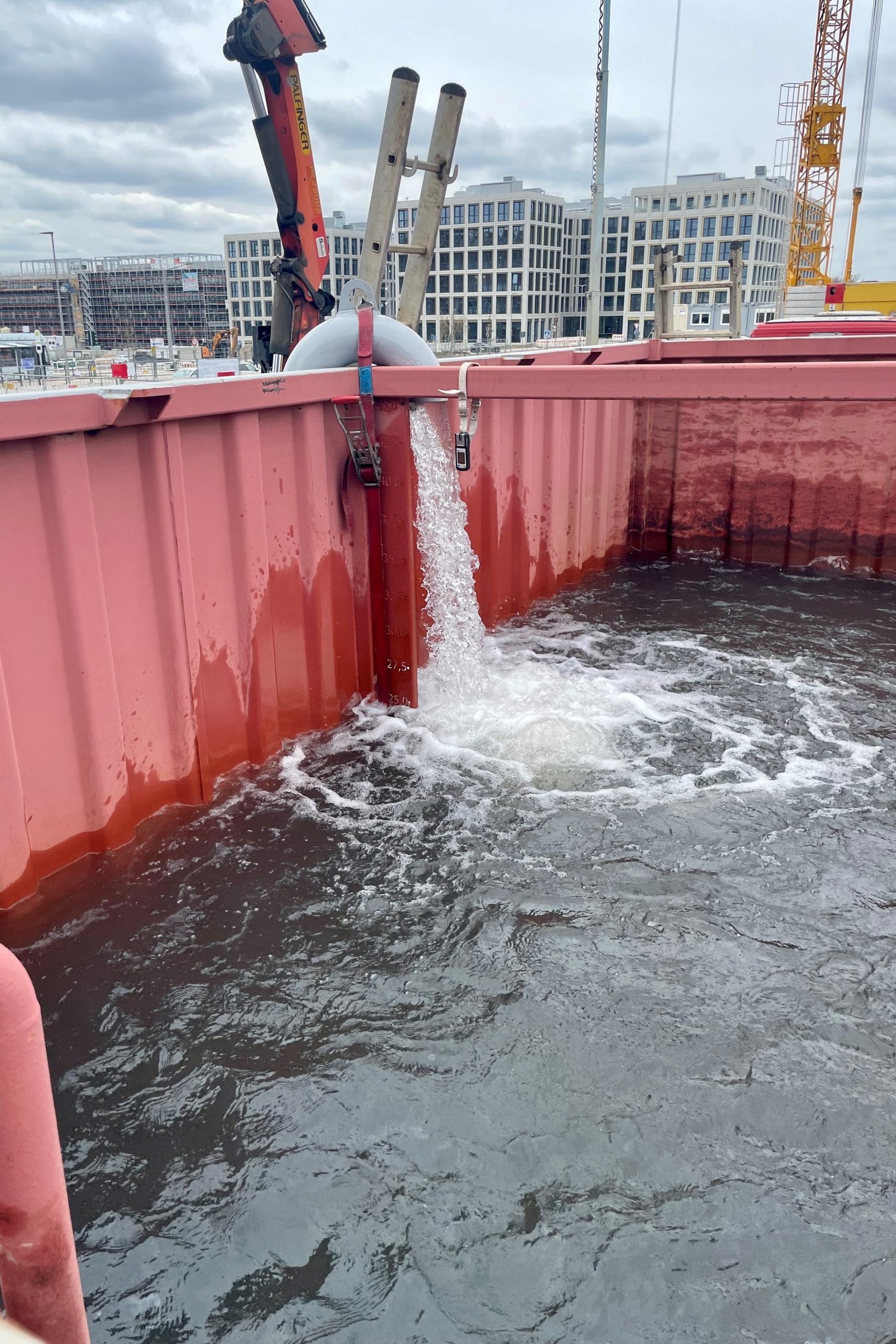Oil Dynamics GmbH supports another innovative concept.
The new MARK 51°7 industrial park in Bochum, Germany, is to be equipped with one of the most sustainable energy concepts in Europe: energy from mine water will supply the district with heating and cooling.
The tailor-made pumping system to lift the mine water to the surface was engineered, built and installed by innovative artificial lift specialist Oil Dynamics GmbH.
Electric submersible pumps (ESPs) were installed in two wells to supply several new buildings with heating and cooling in a sustainable and climate-friendly way: For heating, mine water at a temperature of around 30 °C is pumped up from an 810-metre-deep tunnel and further heated by heat pumps to around 48 °C before being fed into the district heating network.
For cooling, mine water at a temperature of around 18 °C is pumped to the surface from a shallower 340-metre-deep gallery and then cooled down to 10 °C.
The main challenges in realizing the customized pump systems were the extremely wide operating range for centrifugal pumps and frequent load variations. The energy demand of MARK 51°7 varies greatly depending on the time of the year, time of day, weather, day of the week, among other factors. The different energy requirements are served by flow rates between 30 and 150 m³/h. The pump speed is to be constantly adjusted. While in winter the system mainly pumps from the deeper, warmer well, and in summer mainly from the shallower, colder borehole, for spring and autumn it is assumed that the system will operate in multiple changes of direction. For example, on a typical German spring day, when it is still cold at night and in the morning, but sunny and warm from noon onwards, the system has to switch from heating to cooling mode. A control system for the pumping system that is gentle on the equipment and at the same time efficient for operation is currently being optimized with the support of the Oil Dynamics software lab.
The pumping tests performed with Oil Dynamics equipment and field service engineers were successful and when soon in regular operation, the energy contained in the mine water will cover more than 75 % of the heating and cooling needs for all connected buildings on the former coalfield. The difference will be added from a local heating network and conventional cooling systems.
Developed by Fraunhofer IEG and Stadtwerke Bochum and supported by Oil Dynamics, this is the first major industrial zone receiving integrated heating and cooling generated by a combination of geothermal energy, district networks, underground storage and large heat pumps.
Fifth generation heating and cooling networks, also called cold district heat networks, are particularly efficient because they only have a very low operating temperature of the circulating fluid. Heat pumps in the individual buildings can thus draw heat or cold from the network as needed.
Compared to natural gas and electric refrigeration at MARK 51°7, energy from mine water will avoid the emission of approximately 3,200 tonnes of CO2 per year.
The potential for this energy concept can be related to the large number of existing closed mines in Europe and worldwide. Existing infrastructure, often located beneath major cities, can be reused relatively quickly and cost-effectively for sustainable heating and cooling.



